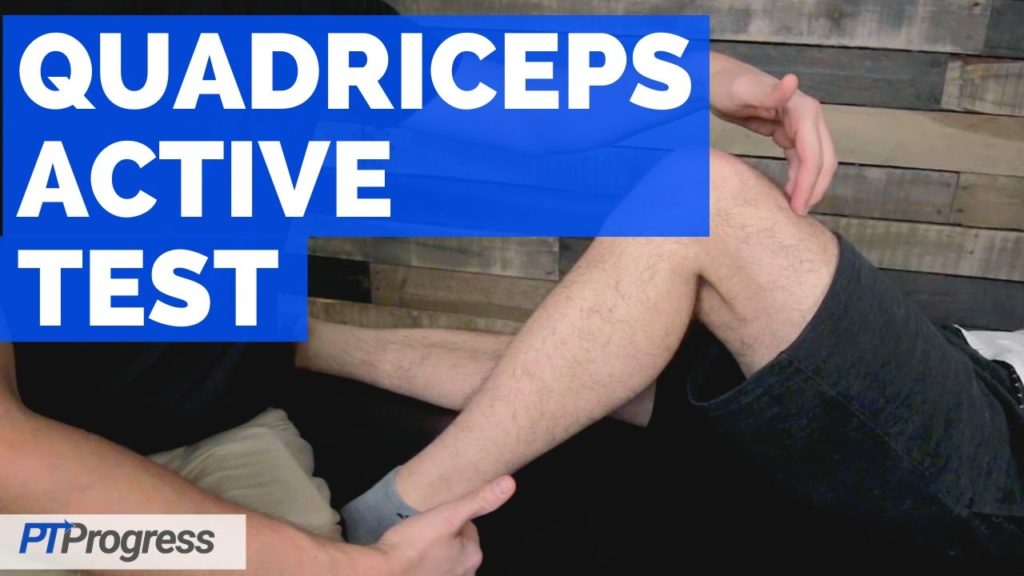
The Quadriceps Active Test is used to assess the integrity of the PCL or posterior cruciate ligament of the knee.
How to Perform Quadriceps Active Test
Position of Patient: The patient is positioned in supine with the hip at 45 degrees and knee at 90 degrees of flexion, similar to the position of the posterior drawer test. The patient’s foot should be flat on the table and stabilized by the examiner’s body.
Performance: The examiner will instruct the patient to activate their quadriceps muscle as if the patient was attempting to kick into knee extension against resistance.
How to Interpret Quadriceps Active Test
Positive Finding: A positive test occurs when the tibia translates anteriorly with quadriceps activation, resolving any lag sign present from the starting position.
Test Accuracy / Reliability / Evidence:
Sensitivity and Specificity
Sensitivity = 0.54
Specificity = 0.97
+LR = 18
-LR = 0.47
Research Source: https://www.ncbi.nlm.nih.gov/pubmed/7943523 Rubinstein RA, Jr., Shelbourne KD, McCarroll JR, VanMeter CD, Rettig AC. “The accuracy of the clinical examination in the setting of posterior cruciate ligament injuries.” The American Journal of Sports Medicine. Jul-Aug 1994;
Next special test: Posterior Sag Sign

